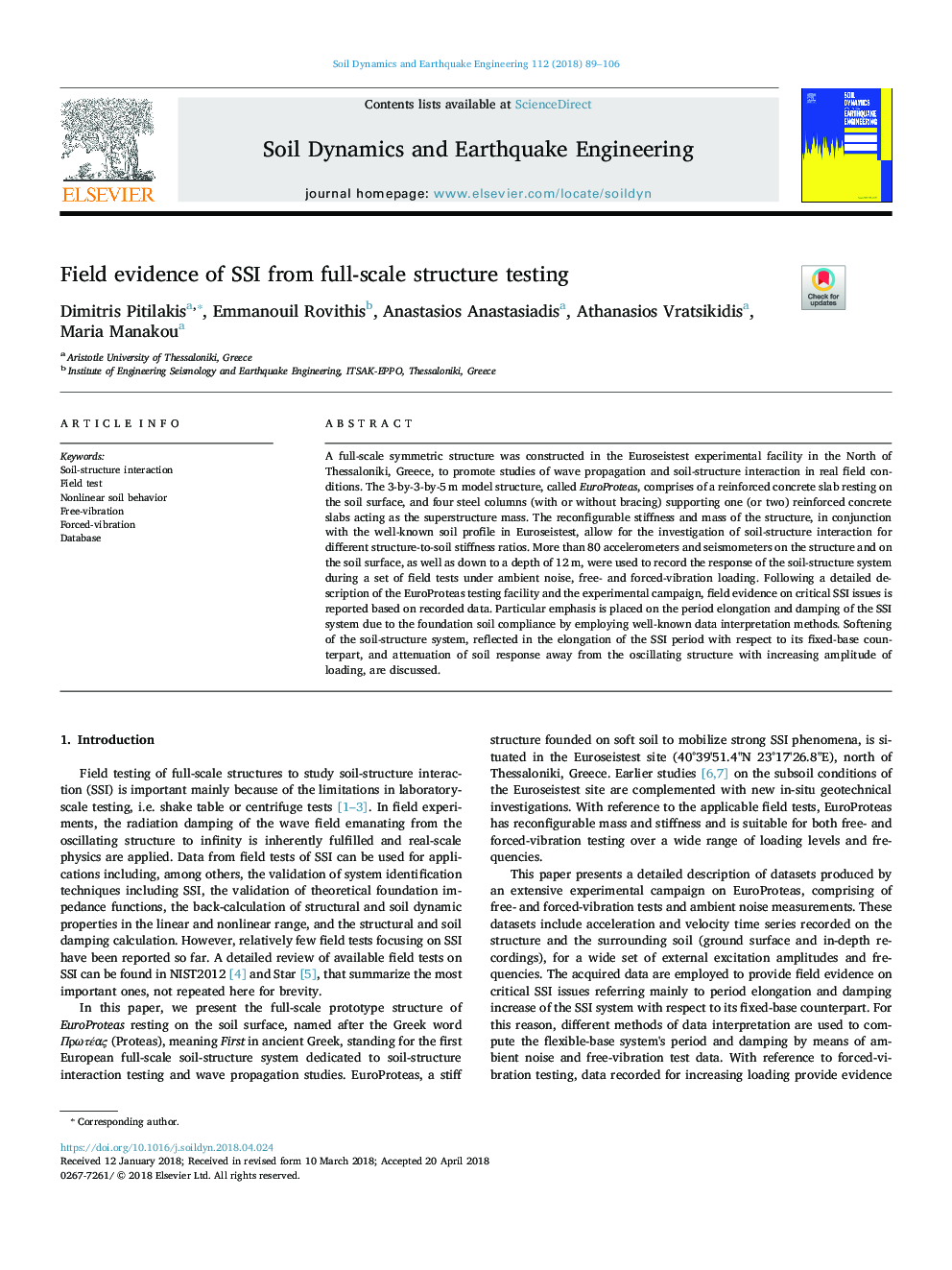| Article ID | Journal | Published Year | Pages | File Type |
|---|---|---|---|---|
| 6769843 | Soil Dynamics and Earthquake Engineering | 2018 | 18 Pages |
Abstract
A full-scale symmetric structure was constructed in the Euroseistest experimental facility in the North of Thessaloniki, Greece, to promote studies of wave propagation and soil-structure interaction in real field conditions. The 3-by-3-by-5â¯m model structure, called EuroProteas, comprises of a reinforced concrete slab resting on the soil surface, and four steel columns (with or without bracing) supporting one (or two) reinforced concrete slabs acting as the superstructure mass. The reconfigurable stiffness and mass of the structure, in conjunction with the well-known soil profile in Euroseistest, allow for the investigation of soil-structure interaction for different structure-to-soil stiffness ratios. More than 80 accelerometers and seismometers on the structure and on the soil surface, as well as down to a depth of 12â¯m, were used to record the response of the soil-structure system during a set of field tests under ambient noise, free- and forced-vibration loading. Following a detailed description of the EuroProteas testing facility and the experimental campaign, field evidence on critical SSI issues is reported based on recorded data. Particular emphasis is placed on the period elongation and damping of the SSI system due to the foundation soil compliance by employing well-known data interpretation methods. Softening of the soil-structure system, reflected in the elongation of the SSI period with respect to its fixed-base counterpart, and attenuation of soil response away from the oscillating structure with increasing amplitude of loading, are discussed.
Related Topics
Physical Sciences and Engineering
Earth and Planetary Sciences
Geotechnical Engineering and Engineering Geology
Authors
Dimitris Pitilakis, Emmanouil Rovithis, Anastasios Anastasiadis, Athanasios Vratsikidis, Maria Manakou,
